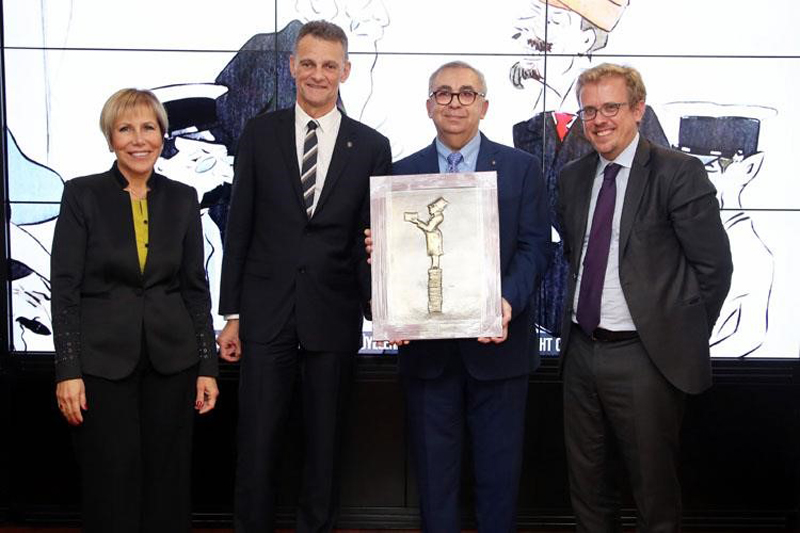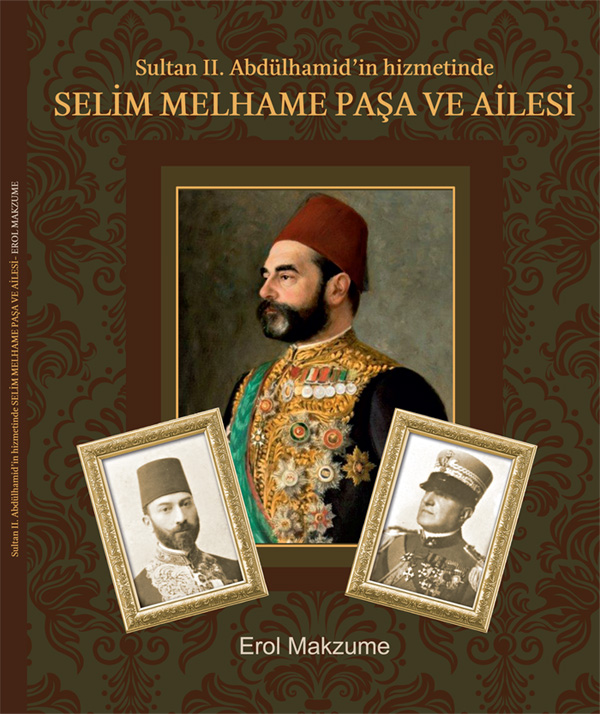
The Interviewees
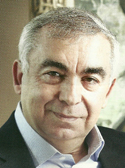
Interview with Erol Makzume, February 2018
1- For the past 25 years you have either on your own or in collaboration have published books and sponsored exhibitions on art and history of many foreign artists who visited the Ottoman lands. What was the original impetus that took you on this journey of exploration and research?
I have known the writer-journalist-researcher Mr. Osman Öndeş since the early 70’s when he was a close friend to my late father Antoine Makzume, who passed away in 1987. In 1998 we co-authored the book on the Dutch-French artist ‘Jean-Baptiste Vanmoor’. In 2002 with Mr. Öndeş we prepared the important publication ‘Ottoman Court Painter: Fausto Zonaro’ which was highly acclaimed in art circles, both in Turkey and around the world. This book and Mr. Öndeş’s encouragement gave me the impetus to research and discover the world of 19th century orientalist artists. While researching on orientalist art, I also started collecting their paintings. From this date on, I prepared new books, exhibition catalogues and articles on art-history which today can be found in my web-site. In 2009 again with Mr. Öndeş we hope to complete an up-dated version of our Zonaro book. It will include new findings on the life of the artist and un-published images of his works that came to light since the initial book.
2- You are one of the directors of your family’s shipping line. How far back was your family involved in this line of business?
My father’s Antoine Makzume’s family originates from Iskenderun (old Alexandretta) with roots spreading to Aleppo, a city where I was born, and the metropole of Beirut where I studied. My mother Elena is of Italian origin, from the Girardi family and was born in Aleppo. Our Shipping agency company was established by my grandfather Emil Makzume in 1923 in İskenderun when ‘Hatay’ was an independent state. My brother-in-law and author Semih Baki are the third generation managing partners of the company. Between 1950 and 2010 we represented various worldwide bulk, container and roro lines. Today our agency activities have come to a standstill because our representations have withdrawn their regular services from Turkey. We also do not have young family members who can carry on the flag. My daughter Anthea lives in London and specialises in art-therapy. My nephews living in London and Paris have altogether other business commitments.
According to some family members the Makzume family originated from Iraq. We seem to have tribal origins from Iraq, the “Makhzoumioun” and derive from a branch that later chose to be convert into Christianity. The Makzume (Makhzoumi) families are today based in Lebanon, Syria and Turkey. They have always been known to be involved in trade and transportation. The branch living in Iskenderun, have for generations been involved in sea and land transportion. This dates back to the middle of the 19th century, when various cereals were transported from the Aleppo area by camel caravans to Iskenderun port for distribution to all over the world. My father Antoine Makzume’s parents originated from Iskenderun (old Alexandretta) with roots spreading to Aleppo and Beirut. My great grandfather Emile was president of Iskenderun chamber of commerce and also an active partner of the “Iskenderun Port Stevedoring Company” which dated back to the 1920’s. During this period Emil Makzume, in his capacity as Iskenderun president of chamber of commerce was also in contact with the renowned French general Maxime Weygand who at the time was on duty in Syria as the “Haut Commissaire du Levant”.
My maternal grandfather Amedée Girardi was the son of of an industrialist, an ice producer (when refrigerators were not invented) from Turin-Italy who settled in Aleppo at the end of the 19th century. Amedée also managed the ice factory and later was also got involved in the export-import trades to and from Syria. He was married to my maternal grand-mother Berta Marcopoli. The Marcopoli’s were of Italian Adriatic origin, first settled in the island of Chios (Sakız Adası) and later some of the family members moved to Aleppo to seek their fortune there. They were also important traders and members of the bourgoisie in Aleppo. - further information on the family.
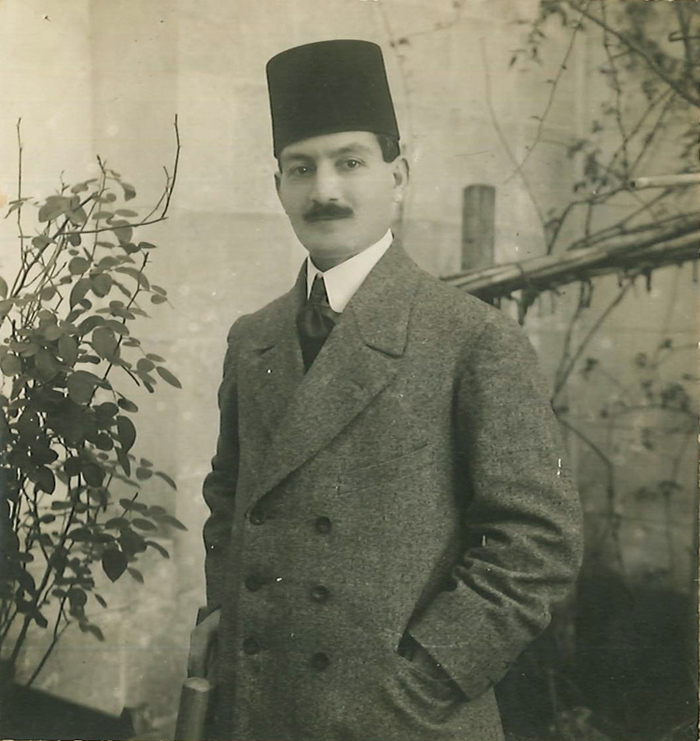
My maternal grandfather Amedée Girardi, wearing a fes, back in the 1920’s.
3- With Cesare Mario Trevigne you prepared the book “Under the Reign of Sultan Abdulhamid: Memoirs and works of Fausto Zonaro” in Turkish (2008) and in English (2011). How revealing were these memoirs and do you think the Ottoman landscape to which he moved helped him to refine his technique?
Cesare Mario Trevigne is the great-grandson of Fausto Zonaro. I first met him in 1999 when we visited him and his mother Jolanda, with Osman Öndeş. Throughout the years he has been very helpful and with his mother Jolanda opened their archives enabling us to discover unknown facts on the artist Zonaro and promote his works not only in Turkey but all around the world. I acquired from them an original typed copy of Zonaro’s memoirs, in Italian. Later with Cesare, we prepared the memoirs and published it in Turkish and English. Thanks to the memoirs, we understand why Zonaro fell in love with the light, colours and diversity of people living in Istanbul, the secret behind his motivation that created so many masterpieces of the Ottoman life.
4- Between 2004-2007, as exhibition coordinator of the “Turkish Grand Assembly – Department of the National Palaces” you organised retrospective exhibitions on works of Fausto Zonaro, Leonardo de Mango at “Dolmabahce Palace Ceremonial Hall” Istanbul, in Rome and at Bari. De Mango was described by the art commentator Thalasso as a painter through whom the East spoke. Would you agree with this evocative description?
Leonardo de Mango who spent a longer period in the East than Zonaro was of a quieter and discreet character. He lived alone and painted in a studio allocated to him by Casa d’Italia of the Italian Embassy. Zonaro only knew Istanbul whereas De Mango had the opportunity to travel and work in Lebanon, Egypt and Libya. This is probably the reason why the art critic Adolphe Thalasso called him “A painter through whom the East spoke”. The years of 2004-2007 were very fortunate years for me when as exhibition coordinator and curator, I organised the historical exhibitions “Ottoman court artist Fausto Zonaro”, “Leonardo de Mango” and “Italian Orientalists at the Ottoman Lands” at Dolmabahçe Palace. The Zonaro exhibition followed in Italy at the Vittoriano Hall in Rome and the De Mango Exhibition at the Pinacoteca di Bari.
5- In addition you were able to provide the images from your own collection for the exhibition: ‘Pierre Loti and the silhouettes of Hassan, Portraits before the 2nd Constitution’, in 2017. Were the various individuals depicted in those caricatures easy to identify or for some was it a detective work?
Preparing the exhibition of “Pierre Loti and the silhouettes of Hassan: Portraits before the second Constitution” got me involved in over a year of intensive and interesting research. The acquisiton of books and documents etc. enabled me to decipher most of the individuals depicted by the French marine officer Guiroye, alias Hassan. I managed to identify some very interesting and little known names, though several characters I could not identify at all. All in all, it was a quite successful and informative event that shed light to the “Gotha” of the 1905-1906 Istanbul. The event took place at the gallery of Lycée Saint-Benoit - images.
6- One of the European origin families you have studied is the Svoboda family who settled in Baghdad for a few generations with Alexander Sandor Svoboda becoming a renowned painter and photographer in that geography. His younger brother Joseph Mathia (1840-1908) and son Alexander Richard Svoboda (1878-1946) also lived in Baghdad and their diaries record the colourful life in that city in the late Ottoman period. Have these been published and if not, do you think they merit that?
It was not easy to bring together a biography of the artist Alexander Sandor, who was born in 1826 in Baghdad and later settled in Izmir. He spent the last fraction of his life in London where he died in 1896. Besides the many landscapes and antique sites that he depicted in Iraq and West Anatolia, in the 1860’s he became one of the earliest photographers who took images of the “Seven Churches” and of the ancient Greek settlement of “Magnesia Ad Meandrum”, in today’s Aydın. The diaries left behind by Sandor’s young brother Joseph Mathia and his son Richard Swoboda shed light both to the resourceful Swoboda Family’s past and to the tribes and inhabitants of different cultural affinities that dwelled in Iraq. The University of Washington has made available a ‘Svoboda Diary Public Site’ where we see that parts of the diaries are open to the public. Research should continue to reveal the still obscure parts of these archives.
7- You have also written about the ‘first Orientalist artist from America: Miner Kilbourne Kellogg’. It appears a good portions of his paintings including that showing Sultan Selim on his death-bed have been ‘lost’. Do you think too much art today has fallen into the hands of those who see this medium also as a means of investment and so choose not to display?
I own an important work of the American artist, Miner Kilbourne Kellogg on whom I have written an article. His sister in law, Margaret Todd Kellogg, was half-sister to President Abraham Lincoln’s wife, Mary Lincoln. A large number of his drawings are today available at the ‘Smithsonian-national Museum of American Art’. Unfortunately, Kellogg painted few oil paintings during his travels to East, reason for which he did not reach popularity of other artists of his time: E. Delacroix, A.G. Decamps, J.F. Gérome and J.F. Lewis. As to the second part of your question, specifically for 19th century (orientalist paintings, sculptures etc.) works acquired by collectioners/investors either from auction houses or galleries, owners hardly display their works in exhibitions or lend to museums, on even short-loan basis. Due to the high value of these works, they are either jealously guarded or they lack the confidence. As a curator I experience great difficulty and resistance to induce them to share their works at public events. This is easier with collectors who know me and have previously lent me their paintings.
8- Another topic you have written about is the ‘smuggling of the Venus of Milo’ from the then Ottoman administered island of Milos in the Aegean. Could you summarise this story for us and do you think there is any argument for monuments such as this being returned to their place of origin?
In the 1820s, the Greek island Milos was within the Ottoman Empire’s territories. The sculpture ‘Venus de Milo’ was unearthed by a local farmer and initial plans were to ship it to a mansion of a Greek collectioner, Nicola Mourousi, in Istanbul. The French, however assisted through their local consul in Milos involved the French navy officers who practically grabbed away the sculpture, whilst it was being loaded onto a steamship bound for Istanbul. They damaged it and loaded it on a frigate delivering it to France. Based on said historical facts, I believe that this sculpture was illegally removed from Milos and should be repatriated to its country of origin.
9- Another historical incident your research has uncovered and you have written about is about the last Caliph of the Ottomans Abdülmecit who continued to paint when sent on his exile to Switzerland and later France when the Ottoman Empire was replaced by the Republic. Is there a market for these paintings and where are they displayed today?
The last Caliph of the Ottoman Prince Abdülmecid was an important painter, influenced from the art of the Ottoman Court painter Fausto Zonaro with whom he entertained friendly relations. A large number of his paintings, can be viewed at Dolmabahçe Palace and at the ‘Painting and Sculpture Museum’ in Istanbul. After his exile to Switzerland and France, Abdülmecid continued producing small oil works, depicting landscapes in and around where he lived. In the 1920’s and 1930’s some of his works were exhibited at the ‘Salons de Paris’ and were highly praised, but none were of orientalist in nature. Works belonging to this period are not in high demand and are available in small numbers among Turkish collectors.
10- Your next exhibition in March 2018 will be entitled ‘Regards Francophone: Turquerie and Orientalism’. Can you help further expanding this title, and help us define where Turquerie and Orientalism start and finish and how they complement each other?
‘Regards Francophone: Turquerie et Orientalism’ is the title of my last exhibition due to take place at the gallery of Lycée Saint-Benoit during the month of March 2018. A total of 50 works from the hand of forty artists have been selected from my private collection. These works cover the last stage of the Turquerie period when Turkish costumes and objects were in great fashion in Europe and when artists could not easily and economically travel to the East. The situation reversed as of the 1840’s, thanks to progress registered in rail and sea transportation, when artists started having easier access to Istanbul: the gate of the East and to Near Eastern countries within the Ottoman Empire. As this exhibition is taking place within the Francophonie Festival, all works selected belong to French or french speaking francophone artists - exhibition catalogue.
11- (question added July 2019) What was the chief motivation for you to write your latest book on ‘In the service of Sultan Abdulhamid II: Selim Melhame Pasha and Family’. Were there any surprises for you in your research?
Preparations of my book “At the service of Sultan Abdulhamid II - Selim Melhame Pasha and Family” all started, years ago when I had a first contact with Selim Pasha’s small grand daughter Myriam Melhame, residing in Florence. I met her knowing Selim Pasha was in charge of the Imperial porcelaine factory at Yıldız Palace and a keen collector of Yıldız Porcelaine products depicted by the Ottoman Court painter Fausto Zonaro. I was in fact making researches for the new Zonaro book which was under preparation.
Selim and his brother Necip operated under difficult conditions of the empire, were from the inner circle of the Seraglio, and loyally defended the interests of the Ottoman State carrying out important services for the Sultan. Selim Pasha, Necip and the other brothers were all bureaucrats of Ottoman state departments after the declaration of the II. Constitution in 1908 and the downfall of Sultan Abdülhamid II, and were all accused of corruption.
Through documents obtained from the Melhame family and Italian, French, British archives I came to the conclusion that it was necessary to enlighten the readers with respect to Selim and Necip Pasha’s accomplishments during the difficult conditions of the empire, taking into consideration the dynamics of the period. Because of the complexity of the situation in Macedonia and Balkans, and not being a historian, I did face difficulty in completing the book, but was very happy to receive positive feedback both from readers and specialists in the field.
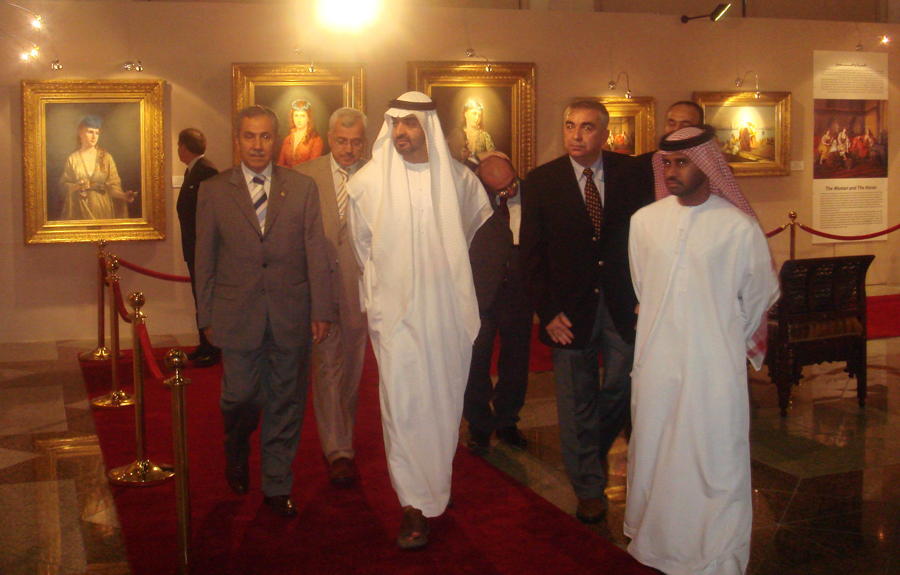
With H.E. Sheikh Mohamed (centre) and H.E. Bülent Arınç (left) at the opening of the Turkish National Palace’s exhibition at Nakheel Hall – Abu Dhabi, 2006.
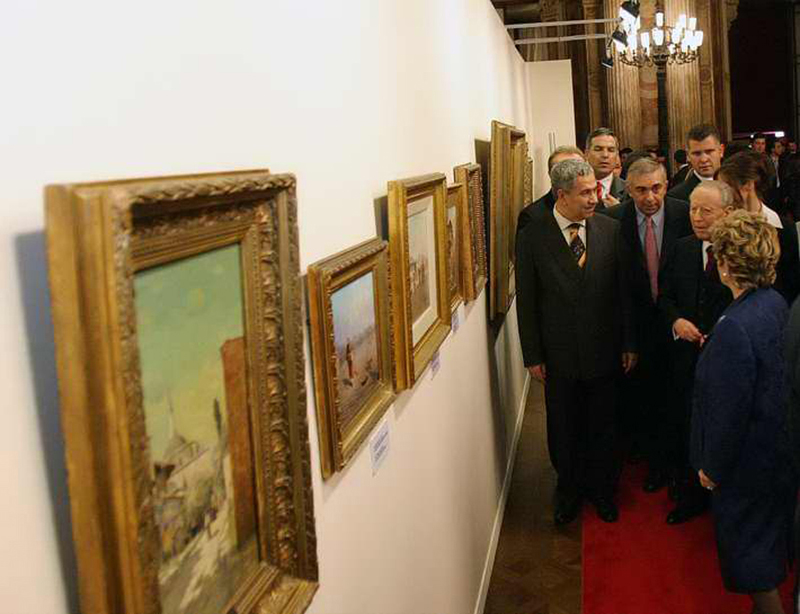
At the opening of the Leonardo de Mango exhibition, with the Italian president Carlo Azeglio Ciampi and H.E. Bülent Arınç at the Ceremonial Hall of Dolmabahçe Palace – Istanbul, 2005
